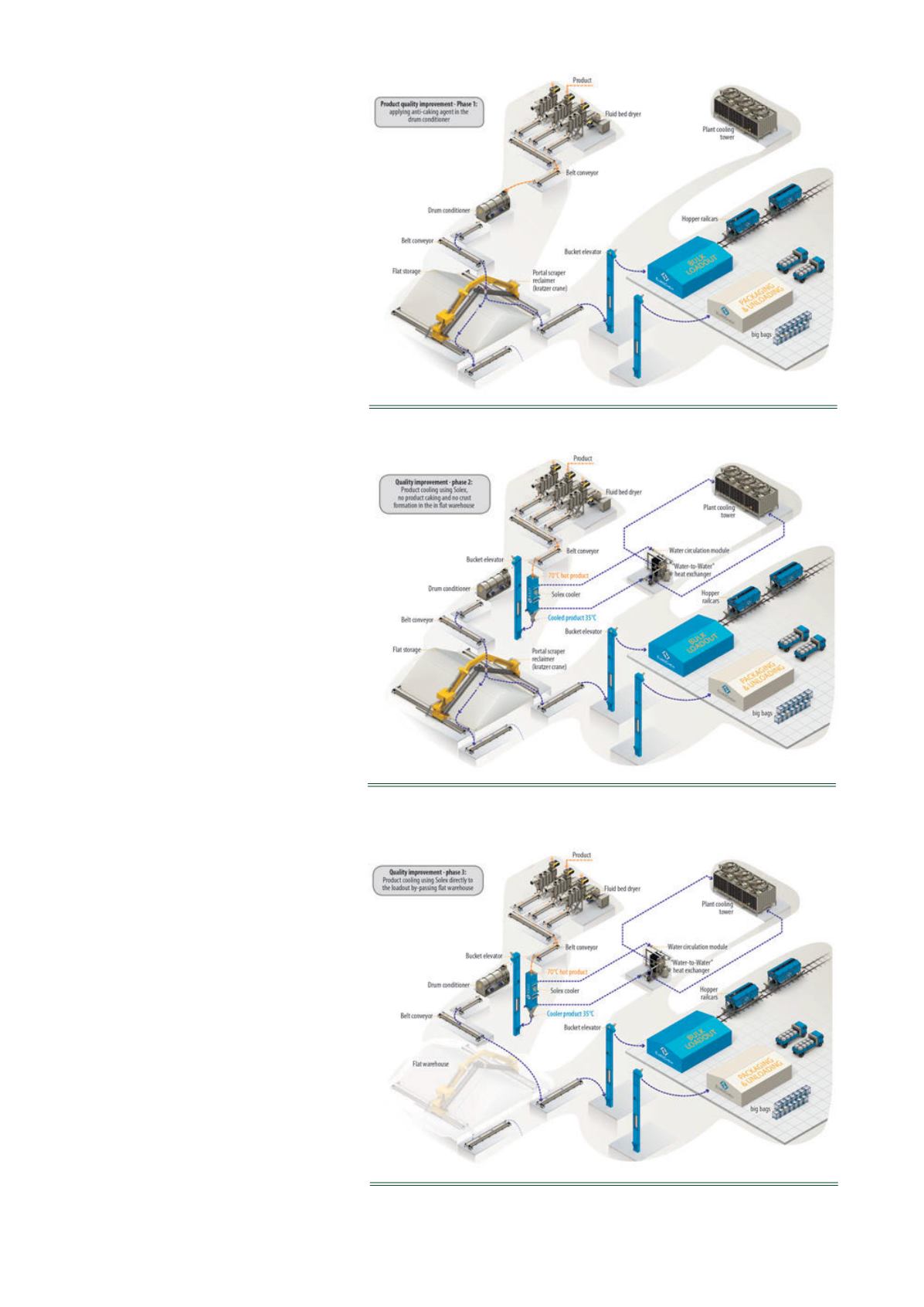
NOVEMBER 2016
| WORLD FERTILIZER |
67
forward, it was successful in reducing the
amount and thickness of the caking.
Unfortunately, NAK Azot was still faced
with the ultimate barrier to market growth:
it needed an effective, efficient and
reliable means to produce more fertilizer.
Within its current facility, this meant
increasing its cooling capacity. Standing at
this crossroad, it realised that incremental
investments would only ever yield
incremental gains. NAK Azot decided it was
time to seek out a game-changing solution
with the reputation to change both its
position and performance in the world
market.
In 2012, NAK Azot contacted Solex
Thermal Science Inc. and chose to
implement the company’s product cooler
that was already at work in nearly 150
fertilizer production facilities around the
world.
The solution
Solex first introduced its indirect contact
product cooling technology to the market
in the early 1990s. In a scenario not unlike
NAK Azot’s case, it was faced with the high
costs and limitations of retrofitting an
existing fertilizer facility with direct contact
cooling technology. Rather than accept the
available options, it developed a simple,
elegant heat exchange technology based on
indirect heat transfer that delivered and
surpassed expectations on multiple industry
challenges.
The product cooler combines the
science of mass flow with the thermal
efficiency of plate heat exchange design. In
the cooler, bulk solids pass in mass flow
through vertical banks of stainless steel
plates. Cooling water flows through the
plates to lower the temperature of the
material by conduction. The water is
circulated through the plates in
counter-current flow for enhanced thermal
efficiency. The indirect plate heat exchanger
design means air is not used in the cooling
process, a feature that reduces installation
and operating costs as well as guarantees
better environmental outcomes. A mass
flow discharge device controls the product
flow rate through the exchanger. The
product moves slowly, via gravity, through
the unit to create sufficient residence time
to achieve the required cooling. A level
control system ensures the product cooler
operates at its optimum configuration.
Key advantages
It can be integrated into nearly any facility
– new or mature – and used to cool full
ranges of fertilizers from urea granules and
Figure 2.
Phase 1. Applying anti-caking agent in the drum conditioner.
Figure 3.
Phase 2. Product cooling using Solex, no product caking and no
crust formation in the flat warehouse.
Figure 4.
Phase 3. Product cooling using Solex directly to the loadout
by-passing flat warehouse.


